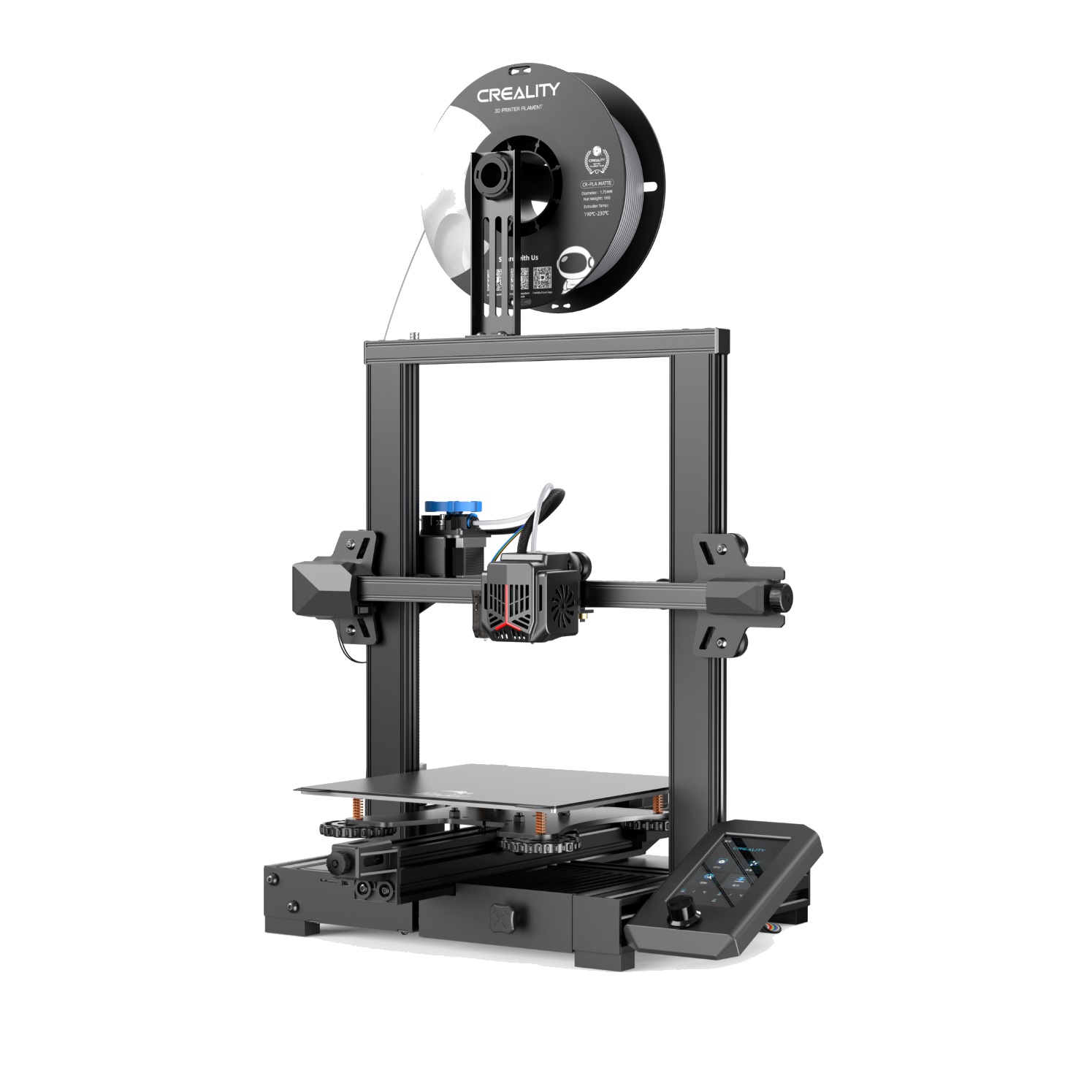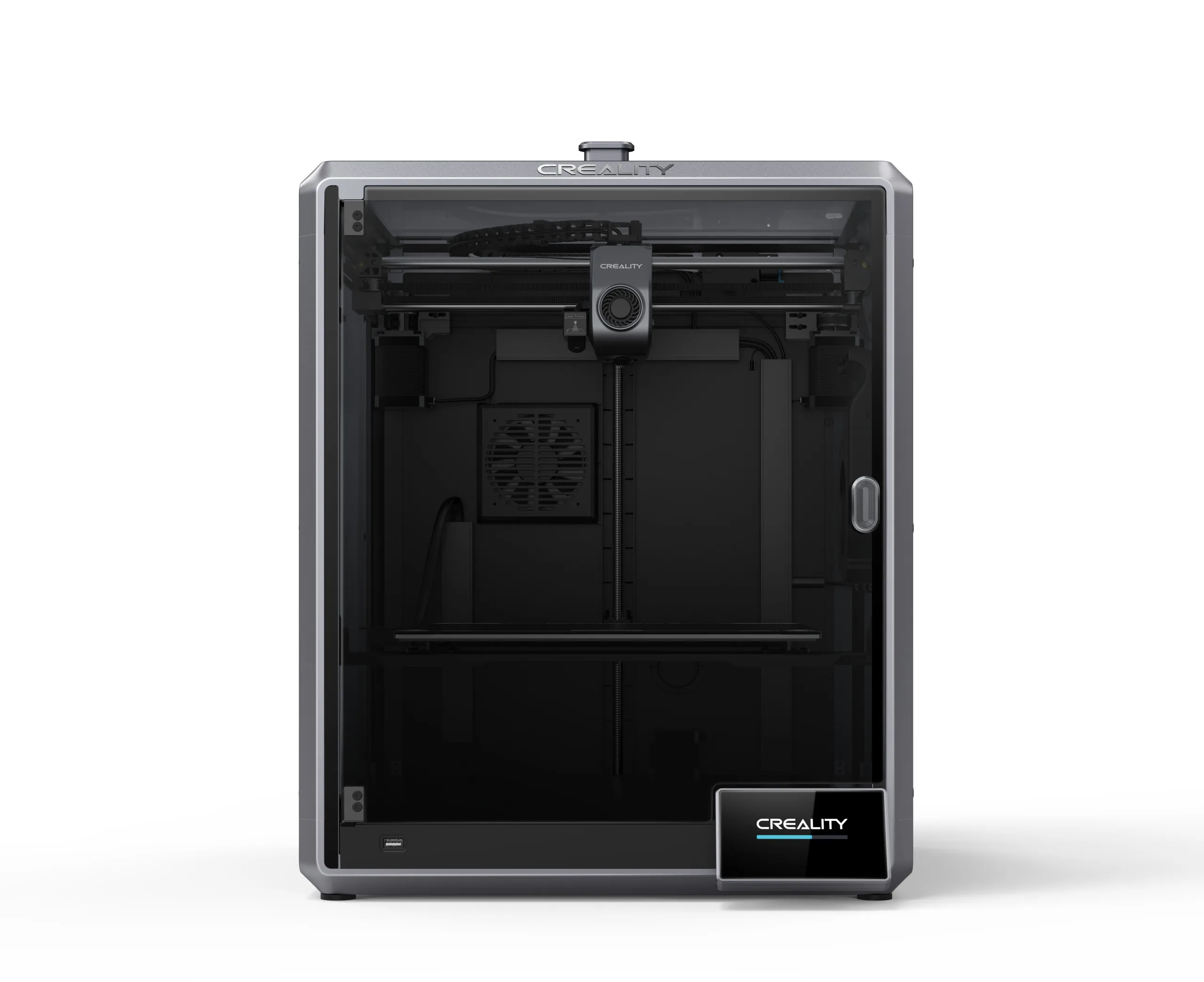Compare Ender 3 V2 Neo vs K1 Max
Comparison between the best 3D printers
Choose the best 3D printer at the best price. The cheapest 3D printers are here.
Buy a 3D printer here with 3D Fila.
 |
 |
|
| Model | Ender 3 V2 Neo[BUY Ender 3 V2 Neo] |
K1 Max[BUY K1 Max] |
| Printing Material | Filament | Filament |
| Buy Filament for Creality 3D Ender 3 V2 Neo | Buy Filament forCreality 3D K1 Max | |
| Estimated price | $310,00 | $1300,00 |
| Manufacturer | Creality 3D | Creality 3D |
| Release Year | 2022 | 2023 |
| Print Volume [mm] | 220x220x250 | 300x300x300 |
| Printer Size [mm] | 438x424x472 | 435x462x526 |
| Weight [kg] | 9,8 | 18 |
| Power Loss Recovery | YES | YES |
| Enclosed printer | NO | YES |
| Bed Leveling | Automatic | Automatic |
| Filament End Sensor | YES | YES |
| Bed type | Heated | Heated |
| Power supply system | Bowden | Direct Drive |
| Standard nozzle | 0,4 | 0,4 |
| Maximum Nozzle Temperature [°C] | 260 | 300 |
| Maximum Bed Temperature [°C] | 100 | 100 |
| Maximum printing speed [mm/s] | 80 | 600 |
| Filament holder | YES | YES |
| Camera for supervision | NO | NO |
| Recommended filaments | PLA, PETG | ABS, PLA, PETG, TPU, PA, ASA, PC, PLA-CF, PA-CF, PET-CF |
| Recommended slicers | Cura, Simplify, Slic3r, IdeaMaker | Creality Print, Cura, Simplify, Slic3r, IdeaMaker e outros |
| Maximum Resolution [mm] | 0,1 | 0,1 |
| Processor | 4.2.2 mainboard | |
| Display | Display touchscreen 4,3'' | Display touchscreen 4,3'' |
| Power Supply | ||
| Connectivity | SD / USB | USB / Wi-Fi / Ethernet |
| Operating systems | Windows, Mac, Linux | Windows, Mac, Linux |
| Date of registration in the system | 2022-12-09 | 2023-12-01 |
| Release date | 2022 | 2023 |
| Extra features | The Ender 3 V2 Neo printer stands out for its automatic bed leveling with the CR Touch system, ensuring high-quality initial layers. It features an all-metal Bowden extruder for increased durability and improved filament handling. Its flexible, PC-coated magnetic build plate makes it easy to remove prints and is durable and easy to clean. It also includes a new user interface with model preview and an updated gantry design. The Ender 3 V2 Neo maintains the same build volume and temperatures as the previous version, supporting popular filaments such as PLA and ABS. It features a quiet 32-bit mainboard and additional features such as a filament sensor, print recovery, simple 3-step assembly, an integrated toolbox, and belt tensioners. | The Creality K1 Max stands out as a fast Core XY 3D printer with a large build volume of 300 x 300 x 300 mm. It is fully enclosed and equipped with AI sensors to prevent print failures. This model has a smooth and flexible PEI build platform, and uses an automatic leveling system with LIDAR, as well as a filament run-out sensor. LAN, Creality Cloud and USB Flash Disk connectivity are available, as well as a 4.3-inch touchscreen interface. The K1 Max is robust, weighing in at 18 kg, and includes an AI camera and limited version of the Klipper firmware. Its motion system is solid and the printer is efficient with high-temperature filaments, but it is not silent. Assembly is 99% complete, requiring only minor adjustments before use. |
| Support for multiple colors and materials (AMS and CFS) | NO | NO |
Notes * |
||
| Cost-benefit | 7 / 10 | 7 / 10 |
| Hardware | 2.8 / 10 | 4.8 / 10 |
| Tela | . | . |
| Print volume | 3 / 10 | 4 / 10 |
| Performance | 0 / 10 | 5 / 10 |
| [BUY Ender 3 V2 Neo] | [BUY K1 Max] |
Conclusion |
| In comparing the Creality Ender 3 V2 Neo and the Creality K1 Max, several key factors come into play, including price, features, and overall performance. The Ender 3 V2 Neo is an entry-level 3D printer offering solid performance and features at a significantly lower price point. Its compact build volume and robust design make it an excellent choice for hobbyists and beginners. The printer's automatic bed leveling with CR Touch, heated bed, and durability, complemented by its lightweight nature, align well for users looking for quality prints without breaking the bank. However, its capabilities are somewhat limited when it comes to printing speed and material compatibility. On the other hand, the K1 Max, while more expensive, presents a substantial upgrade in terms of size, speed, and versatility. With a larger build volume, a high printing speed of up to 600 mm/s, and the ability to handle a broader range of advanced filaments, it caters to more experienced users and professionals seeking efficiency and complex projects. The fully enclosed design enhances usability for high-temperature materials, and features such as automatic leveling with LIDAR and AI sensors position it as an advanced option for serious makers. Nonetheless, it is heavier and may not be as user-friendly for novices compared to the Ender 3 V2 Neo. In summary, the choice between the two largely depends on the user’s specific needs and budget. For those looking for an affordable, reliable printer for basic projects, the Ender 3 V2 Neo is an excellent option. In contrast, for users who prioritize high performance, larger prints, and advanced functionalities, the K1 Max justifies its higher price with superior capabilities. |

